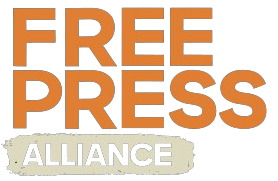The role of journalists in the midst of war goes beyond simple news coverage; they become the eyes and ears of the world, providing vital information from the front lines to a global audience. This type of journalism faces threats ranging from censorship to the dangers of war, but it also highlights the social responsibility of the media due to its enormous influence on public opinion, and thus on the course of the conflict.
The Dangers They Face
Journalists are protected under International Humanitarian Law by the Geneva Conventions of 12 August 1949 and the Additional Protocols of 8 June 1977, especially Article 79 of Additional Protocol I, which relates to the protection of journalists participating in professional missions in zones of armed conflict. However, war journalists operate in environments where the distinction between combatant and non-combatant is often blurred, making them vulnerable to injury, capture, or even death.
According to the Committee to Protect Journalists, numerous media professionals have lost their lives in recent conflicts, especially in Gaza, where 108 journalists and media workers have been confirmed dead to date: 103 Palestinians, two Israelis, and three Lebanese. These numbers underscore the high-risk nature of their work. Beyond physical threats, journalists also face psychological trauma from witnessing and reporting on violence and suffering. Despite their safety concerns, they must remain mindful of their social responsibility and avoid disseminating propaganda created by warring parties.
Shapers of Public Opinion
Psychological action, propaganda, and the control of public information are fundamental factors in any conflict. Propaganda can shift the balance of power in favor of whoever uses its techniques most effectively, whether directed at their own side, the adversary, or neutrals. The first government propaganda operation dates back to 1916 when President Woodrow Wilson, elected during the tail end of World War I, sought to involve the United States in the conflict despite the American public’s pacifist stance. The Creel Commission, a government propaganda body, “managed to turn a peaceful population into a hysterical and warmongering one that wanted to go to war and destroy everything that smelled German,” as Noam Chomsky states in his work Cómo nos venden la moto. Through the dissemination of false information, public opinion was changed.
Since then, several propaganda campaigns have shaped war conflicts, such as during World War II under Goebbels, Hitler’s propaganda minister, or after the 9/11 attacks in 2001, where popular support was needed for deployment in Afghanistan. Given that absolute power does not exist and the State must have societal support to exercise violence, media manipulation becomes a highly efficient tool. Therefore, journalists and media companies, due to their ability to shape public opinion, can become the most effective weapons in a war.
Advocating Peace Journalism
When reporting on war conflicts, there are two perspectives that lack complementarity: war journalism and peace journalism. According to Norwegian academic Johan Galtung, war journalism waits for violence to occur before reporting and lacks historical context. It is violence/war, propaganda, elite, and victory-oriented. In contrast, peace journalism explores the formation of conflict, humanizes all parties, and gives them a voice with empathy and understanding, creating more balanced reporting.
The media can assume a mediating role in a conflict by either using an “us versus them” dichotomized framework, devoid of context where the “other” is blamed and the “our” is justified and defended through propaganda efforts—war journalism—or through fair and balanced exposure of the falsehoods, violence, and suffering of all parties involved—peace journalism. The latter allows the population to draw its own conclusions about the war conflict and make freer decisions.
Wartime journalism is a profession marked not only by the dangers of the battlefield or authoritarian rule but also by a high degree of responsibility and journalistic ethics. News professionals play a crucial role in documenting conflicts, shaping public perception, and influencing political decisions, which gives them the power to write history.

